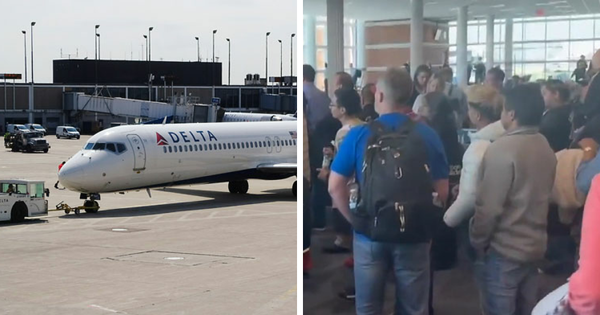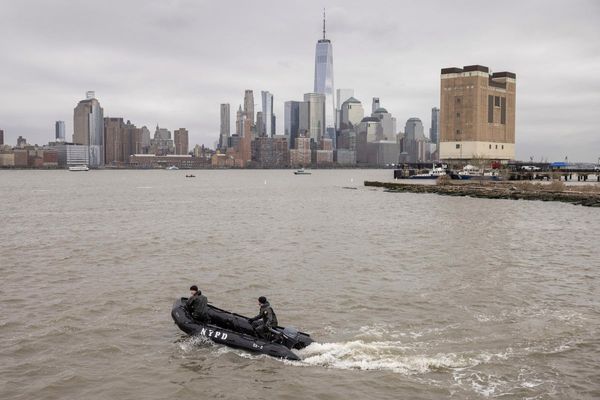We have seen a version of this movie before. In 1990, the Victorian Labor government of John Cain Jr was dying on its feet. Cain’s premiership had been history-making. He was the state’s first Labor leader to win consecutive elections; indeed, the only previous time the party had enjoyed a term of majority government was under his father, John Cain Sr, in the 1950s, and that administration was prematurely terminated by the great Labor split.
Cain Jr’s government had established a formidable modernising reformist record. He remains the state’s most impactful Labor premier: only Daniel Andrews competes with him for that title.
In its third term, beginning in 1988, however, things went deeply awry for Cain’s government. The state was consumed by financial calamities, the most spectacular of which was the State Bank of Victoria tottering under a sea of bad loans. Cain Labor was not solely responsible for these developments; much of the problem originated with the financial deregulation policies of the Hawke-Keating federal Labor government and the scandalous practices of entrepreneurial buccaneers.
Nevertheless, the Cain government’s financial oversight had been lax and its response to the crises wanting. Moreover, its own expansionist economic policy settings had contributed to the state groaning under deficit and debt.
By 1990, economic confidence in Victoria plummeted. To compound matters, the state was wracked by industrial disputation as public-sector trade unions, in a throwback to the past, monstered the wounded Labor administration, regardless of the political consequences. A five-week tram blockade of the Melbourne CBD during the summer of 1990 was a potent symbol of a beleaguered government.
In April 1990, with a state election not due for another two years, voters vented their fury at Victorian Labor by turning savagely on the Hawke government. Federal Labor lost nine seats in the state, bringing it to the cusp of defeat nationally. Amid the retributions that followed, a broken Cain resigned. His replacement was Joan Kirner, the state’s first woman premier.
Game and good-humoured, she tried valiantly to right the listing ship. In October 1992, however, Kirner led Labor to a landslide defeat. Devastatingly effective, Liberal electoral advertising tagged Labor as the “Guilty Party”.
Victoria holds the key, again
The dynamics are not a carbon copy of the early 1990s, but in this federal election another critically maimed Victorian Labor government is the chief thing menacing Anthony Albanese’s prime ministership.
Since the fall of Scott Morrison’s government in 2022, it has been evident that if the Coalition were to forge a viable pathway back to office, it had to be through Victoria. That election left the Liberal Party holding only three seats in metropolitan Melbourne, a situation worsened when it lost the Aston electorate to Labor in a historic by-election result in April 2023. What is more, redistributions since then have wiped out the Liberal majorities in its two remaining Melbourne-based Liberal seats, Deakin and Menzies.
It is difficult to overstate the significance of this electoral landscape: the Liberals are virtually banished from the second-largest metropolis in Australia. It is an untenable position for a party with realistic pretensions to forming national government.
The unpopularity of Premier Jacinta Allan and her Victorian Labor government is arguably the only ambiguous factor working in favour of federal Opposition Leader Peter Dutton in this election.
This is a contest shadowed by the extremism of US President Donald Trump, which is curdling support for Dutton as a result of him dangling his toes in Trumpian waters over the past three years, and in which the emptiness of the Coalition’s policy cupboard is being damagingly exposed. In that context, Victorian Labor’s woes have become the Liberal leader’s last best hope for getting anywhere near the prime ministership.
The antagonism towards Allan and her ministers among Victorian voters is palpable. It alone may cost Albanese sufficient seats to tip him into minority government, albeit not delivering enough to bring Dutton within reach of gaining office. If there is electoral carnage in Victoria on May 3, there is a high probability that Allan’s premiership will be a casualty, as happened to Cain in 1990.
‘Glass cliff’ or poor performance?
How much is Allan to blame for this predicament? At one level, she is a quintessential victim of the “glass cliff” syndrome. That is, a woman leader handed a poisoned chalice by her male predecessor (Daniel Andrews), inheriting office at a time when the government is in an irreversible downward spiral. In short, Allan has been set up to fail.
Allan obtained the premiership with the state heavily saddled by debt and deficit. It was also committed to a series of major infrastructure projects running over budget and increasingly mired in contention. The state’s parlous finances are choking investment in public services at the same time as Melbourne’s population continues to surge, especially in the outer suburbs where services and infrastructure are already overstretched. The straitened budget has also curtailed Allan’s ability to strike out in fresh policy directions. She is tethered to Andrews’ program.
Andrews shadows Allan in other ways. It was inevitable that the departure of such an unhealthily domineering leader would leave a vast vacuum. He was the banyan tree under which nothing would grow. Similarly, his crash-through style was always likely to make his successor look pallid by contrast.
Public goodwill towards the Labor government has also been exhausted after more than a decade in power. There is a strong “it’s time” sentiment in the community.
The disenchantment with the government is fomented by a media not only sceptical of, but now combatively antagonistic to, Labor. There is an element here of Allan being the target of a pent-up animus to Andrews. He walked away in 2023 an undefeated three-time election winner unscathed by frustrated journalists and wrathful right-wing commentators. In lieu of tough guy Andrews, they now pile on his vulnerable woman successor.
Read more: Dan Andrews leaves office as a titan of Victorian politics - who drove conservatives to distraction
Opinion polls indicate the public longs to be rid of the Allan government, with which she has been a senior minister since 2014 and so is indelibly identified. The rub for voters is that the Victorian Liberal opposition is such an unattractive alternative. The extraordinary ongoing conflict between the stridently conservative religiously motivated upper house member Moira Deeming and the former leader John Pesutto – in which the former and her external urgers appear hellbent on bankrupting the latter over defamation legal damages – is symptomatic of how venomous are the philosophical and personal hostilities inside and around the Liberal Party.
Faced with this Hobson’s choice, what the community can do is express its discontent with Victorian Labor at the federal ballot box, while deferring the decision of whether it can bear to embrace the Victorian Liberals in November 2026.
But we should also expect many voters who desert Labor in May not to head to the Liberals, but rather to a melange of minor parties and independents, as February’s Werribee state byelection result anticipated. This will likely limit Dutton’s gains in the state.
On the other hand, Allan is not a mere unfortunate bystander to Victorian Labor’s plight. The “glass cliff” is not sufficient alibi for a premiership that, after 18 months, has been decidedly underwhelming.
Allan has shown little capacity to build a distinctive or notable leadership persona. There were early efforts to brand her as a politician rooted in the community, a Bendigo mother attuned to the lives of ordinary Victorians, but this has not developed into anything substantive.
Her communication skills are prosaic – another adverse contrast to the cut-through power of Andrews. Mostly, Allan is reactive, tossed and turned in a maelstrom of events. Rather than carving out a proactive direction, she seems to operate in perpetual crisis-management mode.
Leadership is a work of alchemy at which few excel. Sadly, the evidence grows that Allan, an industrious minister, undoubtedly decent of character, is now elevated above her rank. One suspects she is another example of someone who has spent too much of her life immersed in politics (she entered parliament at the tender age of 25). They lack a relatable personal narrative because politics is the only thing they have really known. Though formally well-educated and steeped in the mechanics of their vocation, they are somehow attenuated, without a deeper erudition and devoid of the higher arts of statecraft.
The death spasms of a leader and a government are never edifying. That ordeal is all the greater when the process is drawn out. Victoria still has another 18 months until the next state election. The question for now is what collateral damage the Allan government will inflict on federal Labor as it slowly and excruciatingly expires.
In the past, Paul Strangio received funding from the Australian Research Council.
This article was originally published on The Conversation. Read the original article.







